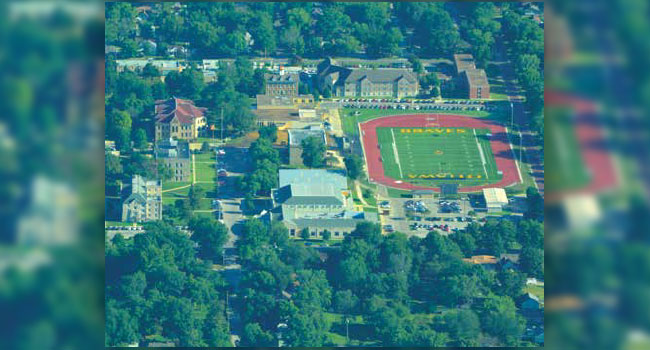
Surveillance Success
Ottawa University teams up on IP video solution
- By Keith Harris
- Apr 01, 2015
Ottawa University, in Ottawa,
Kansas, has a rich heritage.
Since 1865, the university has
educated its students. Many
people rely on Ottawa University
to help them achieve a lifetime
of personal growth and
significance.
The faculty and staff at the university are
also charged with the responsibility of keeping
students safe. Ottawa University’s three
residence halls become home to students who
are living away from their families while
attending the college.
An End to Analog
Somewhat ahead of its time, Ottawa University
installed analog video cameras in its residence
halls about 10 years ago. The number of cameras
and available technology were limited.
“We really didn’t have enough cameras,”
said Tom Taldo, dean of student affairs, “and
the camera placement wasn’t good. But, our
biggest problem was you couldn’t make out
any faces from the video images. The recordings
were practically useless.”
The university has a long-standing relationship
with the security integrator, Midwest
Card and ID Solutions. Gary Williams, a Midwest
sales engineer, met with Taldo to discuss
options to upgrade their video surveillance
system. Williams introduced Taldo to LENSEC
IP video management software and to
IQinVision megapixel camera technology.
“We wanted an IP-based system with crisp
image resolution,” Williams said. “We wanted
a cost-effective system for indoor and outdoor
surveillance. Gary Williams and Mike
Brimmer from LENSEC showed me a system
that meets my needs.”
Rolling Out IP Video Surveillance
Phase one of Ottawa’s plans calls for IQeye
Alliance dome cameras to be installed in the
new university’s new student union. All cameras
will be managed by LENSEC’s Perspective
VMS and monitored by security personnel.
Phase two will see additional IQeye cameras
installed at the student center library. In all,
more than 50 cameras and servers running Perspective
VMS will be deployed in this project.
“The new system is much more user
friendly,” Taldo said. “We are able to stop
and review the video, we email video clips,
and the quality and clarity of the images
doesn’t even compare—we are able to make
out exactly who is in the frame. Also, not
everyone who touches this system needs to
be considered an IT expert. I really appreciate
the minimal training needed to run this
software effectively.”
In addition, LENSEC provides a browserbased
solution that displays quality video
whether the user has a Mac or a PC. In an
education environment, that is useful.
Solving Problems, Creating a
Safer Environment
“We’ve had a few theft issues,” Taldo said,
“especially at the end of the semester when
electronics are stolen. The new system, with
its capabilities and image clarity, is helping us
solve many of those incidents.”
The university also has plans to expand
video surveillance outdoors.
“We’ve had some of bike thefts,” Taldo said.
“The students are going to be pleased when we
protect the bike racks and reduce problems.”
Continued System Expansion
Midwest Card, LENSEC, IQinVision and
Ottawa University are drawing up expansion
plans to install video surveillance throughout
the entire campus. When completed, the system
will have hundreds of cameras inside
buildings and monitoring grounds.
Taldo hopes to extend IP video surveillance
to several remote Ottawa campuses
located in Arizona, Wisconsin, Indiana, and
in Kansas City. LENSEC and IQinVision
intend to tie campuses together across the
network for a seamless solution providing
remote video streaming among the campuses.
“Everybody has really enjoyed the quality of
this new system, including our Information
Technology team. Our IT team has fully
embraced LENSEC & IQinVision and are
excited to help continue to lay the foundation
for future expansion
across all of our Ottawa
University locations,”
Taldo said.
This article originally appeared in the April 2015 issue of Security Today.
About the Author
Keith Harris is the public relations manager at LENSEC.